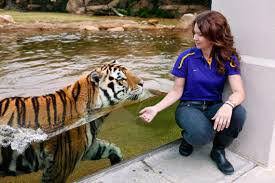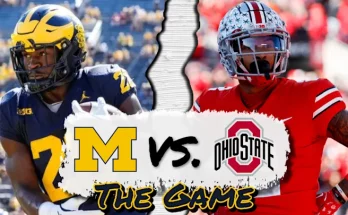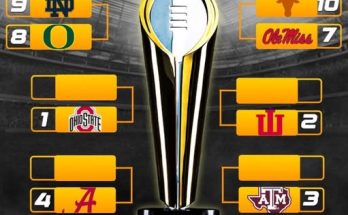In the world of college football, where tradition bleeds into pageantry and where mascots often become living symbols of pride, resilience, and identity, few figures stand taller—figuratively and literally—than LSU’s Mike the Tiger. In a thrilling culmination of nationwide polls, cultural analysis, and fan-fueled fervor, Mike has now officially been crowned as college football’s most iconic mascot, a title that cements not just his regal bearing but also the unshakable loyalty and historical mystique surrounding him. He has outpaced formidable rivals like Texas’ Bevo and Georgia’s UGA, both storied in their own right, but ultimately fallen just short of the raw magnetism and uncontainable spirit that Mike embodies. This crowning moment is more than a mere win for LSU—it’s a moment of roaring affirmation for the Southeastern Conference and for an entire fanbase that has long known what the rest of the nation is just waking up to: Mike the Tiger is in a league of his own.
At the center of LSU’s campus in Baton Rouge resides a living, breathing Bengal tiger that is not only a mascot but an institution. Mike VII, the current iteration of LSU’s most revered symbol, lives in a state-of-the-art 15,000-square-foot habitat adjacent to Tiger Stadium, also known as Death Valley. This is not just a zoo-like enclosure—it’s a palace, one designed to reflect the dignity and majesty of a creature whose presence can electrify an entire stadium. The sheer idea that LSU houses a live tiger, and does so with such attention to ethical standards, environmental enrichment, and veterinary care, sets the program apart. While other schools may have mascots in costume or animals that show up occasionally, Mike is a full-time resident, guardian, and spiritual heart of LSU football.
The competition, of course, is nothing to dismiss lightly. Texas’ Bevo, a longhorn steer who lumbers onto the field with silent gravitas, has long represented the vastness and toughness of the Lone Star State. Georgia’s UGA, an English bulldog beloved for his droopy face and regal red jersey, carries the Southern aristocratic charm and ferocious bark of the Bulldogs. Both mascots are worthy rivals, steeped in rich traditions and supported by fanbases that cherish their presence on and off the field. But where Bevo brings stoic might and UGA brings aristocratic pride, Mike brings something more primal—something that taps into the deeper, almost mythological aspects of sport, identity, and fearlessness.
It is this unfiltered ferocity—tempered by dignity and enhanced by LSU’s relentless commitment to excellence—that places Mike on a higher pedestal. When Mike is wheeled into Death Valley on game day, the crowd doesn’t merely cheer—they erupt. The players glance toward him and see not just a symbol, but a reminder of who they are representing. For many LSU athletes, Mike is not just a mascot. He is a talisman of dominance, a breathing embodiment of grit and pride that runs through every defensive tackle and offensive drive. Coaches reference him in pregame speeches, fans take selfies at his habitat like pilgrims at a sacred site, and opponents can’t help but feel the psychological weight of knowing they’re stepping onto a field presided over by an apex predator.
Even off the gridiron, Mike’s impact is felt in powerful ways. His likeness appears on merchandise, school branding, and charitable causes. He’s the subject of children’s books, local lore, and viral social media campaigns. His official Twitter account, run by passionate LSU staff, blends ferocity with humor and regularly goes viral during football season. More than that, Mike has become a point of education and conservation. LSU’s Veterinary School ensures he receives top-notch care, while also using his presence to teach students and visitors about animal health, habitat preservation, and the responsibilities of caretaking for such a magnificent creature.
Mike’s path to this symbolic throne has not been without moments of reflection and evolution. Over the decades, LSU has adapted its treatment and housing of Mike to reflect modern ethical standards in animal care. The school no longer forces Mike into the stadium on game days, instead allowing him to roam—or rest—by choice. That detail alone encapsulates the respect LSU holds for him. He is not paraded like a novelty act but revered like a living legend. The transition from Mike VI to Mike VII in 2017 was handled with the gravity and reverence of a royal succession, complete with public mourning, campus-wide tributes, and careful vetting of the new cub who would grow into the role.
While Bevo famously made headlines in 2019 by charging toward UGA during a Sugar Bowl altercation—an incident that both thrilled and alarmed college football fans—Mike remains a symbol of controlled power. There is no bravado, no need for drama. Mike doesn’t have to charge or bark. His very presence is enough to make thousands rise to their feet. His roar—though rare—is so thunderous that it has been known to silence even the most raucous of tailgates. His eyes, often focused through thick glass walls, reflect both wildness and wisdom. He is not a mascot in the traditional sense; he is a sovereign force.
One must also consider the cultural context of LSU itself. Louisiana is a land steeped in mystique—home to jazz, gumbo, Mardi Gras, and a kind of communal spirit that thrives on identity. In that setting, Mike fits perfectly. He is as much a part of the fabric of Baton Rouge as the Mississippi River or the French Quarter ambiance. Alumni return decades after graduation just to see him. Children grow up with posters of him on their walls. And students, whether they’re athletes, musicians, or scholars, look to him for inspiration.
The title of “most iconic mascot” is not simply about recognition; it’s about resonance. Mike doesn’t just stand tall in the stadium—he lives in the collective heartbeat of the LSU community. He roars not just for touchdowns, but for resilience, unity, and the shared experience of belonging to something greater. That is what ultimately edges him past Bevo’s stoic power and UGA’s Southern charm. Mike the Tiger doesn’t need to do tricks. He doesn’t need to appear at every game. His very existence, his reputation, his history—all combine to create a figure who is beyond imitation.
To see Mike is to feel something ancient and electric. It’s to be reminded of nature’s power and our own striving for excellence. As college football continues to evolve—with NIL deals, conference realignments, and ever-increasing media scrutiny—the traditions that ground the sport become even more valuable. And in that realm of sacred traditions, Mike the Tiger now officially reigns as king.
His crown may be metaphorical, but the legacy is very real. Future mascots will come and go. New schools will rise in the rankings, and old rivals will stage memorable comebacks. But Mike’s place in college football history is secure. He is not just the face of LSU—he is the pulse, the roar, and the living reminder that in college football, greatness is not just measured in wins or trophies, but in the indelible spirit that certain symbols inspire. Mike the Tiger inspires awe. And for that reason, he now wears the mantle of college football’s most iconic mascot—with the kind of majesty only a true king can possess.



